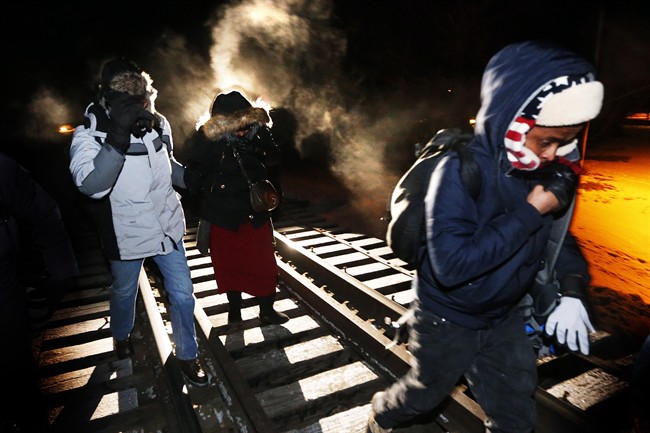For most of its history, America has been a beacon to the world’s huddled masses, yearning to breathe free. It was the destination of choice for those seeking to escape strife and tyranny, to enjoy equality of opportunity and to make a better life for themselves and their families.

Today, however, many among the huddled have other ideas. The election of President Donald Trump, his nativist campaign rhetoric, his pledge to wall off the country’s southern border, his travel ban on seven majority Muslim countries and his deportation “surge” have dimmed America’s lustre.
In response, eyes — and feet — are turning north. The month of January saw 452 refugee claims at the Quebec-U.S. border crossings, compared to 137 in January 2016. Ontario’s immigration website crashed when it reinstated its Provincial Nominee Program, clocking 117,000 visits related to 6,000 nominee spots in just three days. And a
21st century version of the famous “underground railroad” is opening up, as U.S. churches offer sanctuary to illegal immigrants — and help some of them get across the border to Canada.
What is Ottawa doing in response? Not nearly enough. Immigration Minister Ahmed Hussen has said Canada will not rescind the Safe Country Agreement between Canada and the U.S., despite the fact that it creates a loophole which perversely encourages illegal crossings by allowing those who do so to claim refugee status. Nor is the government considering closing the loophole, as former immigration minister Jason Kenney suggested, to stop “incentivizing people coming in illegally and dangerously.”
“As of today,” Hussen said, “we continue to monitor the situation very closely. The U.S. asylum system is available to those that are seeking asylum.”
Instead, this week the Canada Border Services Agency set up a trailer in Emerson, Manitoba, to process the illegal migrants who now arrive on a daily basis — 143 so far this year, a dozen in the past two days alone. It would be almost laughable — if people weren’t losing fingers and toes trekking for hours in the bitter cold, or dragging infants in car seats through waist-deep snow.
READ MORE: Why are asylum seekers crossing into Canada on foot and what are their rights?
Worse yet was Public Safety Minister Ralph Goodale’s assertion that these crossings were the migrants’ plan all along.
“The vast majority … are actually transiting through the United States,” he told the West Block’s Vassy Kapelos over the weekend. (In the dead of winter, in Manitoba or Quebec, when it is most dangerous to do so?) When asked why they are crossing illegally, Goodale couldn’t really offer an answer: “That is a very good question … That’s another part of our analysis.”
Those non-answers are simply not acceptable. The trickle of illegal entries has been swelling since Trump’s election. The world is tweeting images of Canadian police “welcoming” (ie: arresting) scores of illegal immigrants. Meanwhile, Canadians are wondering what their government is doing to do to address fears for the country’s safety and security, and for the public purse.
Keep in mind, it’s not Ottawa which will bear the brunt of dealing with illegal immigrants; provinces and municipalities will. While immigration may be a matter of federal jurisdiction, it’s the levels of government that deliver basic services that will be affected the most.
READ MORE: Pallister announces $180,000 in supports, emergency housing for asylum seekers
Provinces will have to deal with greater demand for health care and education. Cities will see increased use of programs and infrastructure as diverse as libraries, community centres, public transit and garbage collection. In Canada’s growing “Sanctuary Cities” movement, law enforcement is also on the front lines: In Toronto, the police are now grappling with whether they should move from a “don’t ask” policy on illegals to “don’t ask, don’t tell.”
The private sector will also feel the pinch. Toronto and Vancouver, where housing is already next to unaffordable, could see their real estate markets stressed even further. And low-wage workers could see themselves squeezed out of jobs by illegal immigrants willing to work under the table for less than the minimum wage in such industries as construction, domestic work and food services — just as it happened in the United States.
With Trump set to sign a new, allegedly “flawless” executive order on immigration this Wednesday, we can expect the number of asylum seekers and illegal immigrants to grow. Prime Minister Justin Trudeau needs a plan to encourage legal immigration, discourage queue-jumping and process migrants efficiently, effectively and humanely — before these crossings become a crisis.
Tasha Kheiriddin can be heard between noon and 2 p.m. on Toronto Talk Radio AM640. She’s also a columnist with Global News and iPolitics.ca, where this piece first appeared.







-_MMC037FX_tnb_1.jpg?w=1200&quality=70&strip=all)






Comments